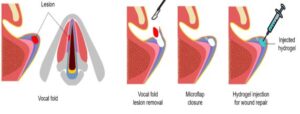By combining the knowledge of Chemistry, biology, physics, and engineering, scientists can discover a complex biomaterial, capable of repairing heart muscles and vocal cords, and it is taking regenerative medicine, a step forward (Science Daily, 2021). It is very difficult for cardiac arrest survivors to heal and continue the journey of their life. After recovering from the heart damage, it becomes very much challenging for the survivors, as the constant movement and the heartbeat makes the healing process more complex. To deal with this problem, a team of scientists has discovered an injectable hydrogel (Science Daily, 2021). This hydrogel will be able to repair the damage by creating room for the cells so that they can live and grow there.

Figure 1: Hydrogel
(Source: Taheri, et al., 2021)
During the injection, the biomaterials remain porous and permeable enough to allow the cells to pass through and grow and after entering the body, it regains their structure (Taheri, et al., 2021). The team has suggested that the hydrogels can be injected into the human body through needle syringe injections.

Figure 2: Injection of the hydrogel
(Source: Taheri, et al., 2021)
The integrity of the structure of this hydrogel is being maintained by the dynamic biomechanical loadings. The scientists have tested the durability of the gel and have admitted that the hydrogel remains intact after millions of vibrations. Scientists have fabricated the hydrogel by orchestrating gelation in a stepwise manner (Taheri, et al., 2021). They have mentioned that the pores of the hydrogel are interconnected, which is enabling the perfusion of the medium. This hydrogel is also compliant with the encapsulation of the cells while giving space for the cells to proliferate and grow. “The results are promising, and we hope that one day the new hydrogel will be used as an implant to restore the voice of people with damaged vocal cords, for example, laryngeal cancer survivors,” explained Guangyu Bao. Thus, the outstanding biochemical performance of the newly invented biomaterials is suggesting that scientists use them in drug delivery, tissue engineering, modeling of disease, and so on. Now, the scientists are looking forward to translating these newly discovered high-potential hydrogels to the clinics. The entire regenerative medical science is thankful for the unprecedented combination of the mechanical, as well as biological properties for the development of this injective highly potential biomaterial.
Referencing
Science Daily. (2021, November 30). Synthetic tissue can repair hearts, muscles, and vocal cords. Retrieved from Science News: https://www.sciencedaily.com/releases/2021/11/211130150456.htm
Taheri, S., Bao, G., He, Z., Mohammadi, S., Ravanbakhsh, H., Lessard, L., & Mongeau, L. (2021). Injectable, Pore‐Forming, Perfusable Double‐Network Hydrogels Resilient to Extreme Biomechanical Stimulations. Advanced Science, 2102627. Retrieved from https://scholar.google.com/scholar?output=instlink&q=info:D594-C8A65sJ:scholar.google.com/&hl=en&as_sdt=0,5&scillfp=12056076121650838494&oi=lle